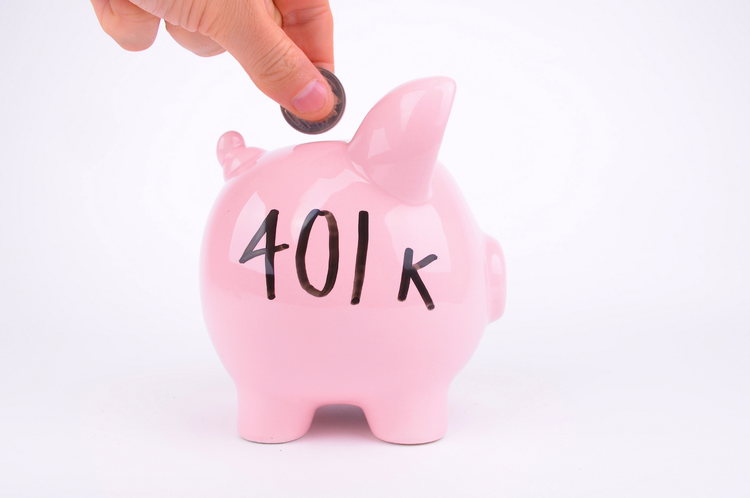Healthcare Provider Update: Monsanto, a major player in agricultural biotechnology, is covered by various health insurance providers, with many employees accessing coverage through employer-sponsored plans. However, healthcare costs for employers, including those at Monsanto, are projected to rise significantly in 2026. This surge is attributed to a combination of factors such as escalating medical expenses, an expected 8.5% increase in employer-sponsored insurance costs, and possible reductions in federal subsidies for ACA plans. Moreover, with insurers foreseeing double-digit premium increases, many employees could face a substantial financial burden if these trends continue, as both employers and employees adjust to these rapidly increasing costs. Click here to learn more
{
Given the current elevated market volatility, we think now is a good time to revisit important value metrics with Monsanto employees and retirees in our four-part series. In the third part of this four-part value series, we will look at the Dividend Yield ratio.
We believe the Dividend Yield ratio can be a valuable tool in planning for Monsanto employees' retirements. Investors are often looking for ways for their clients to beat the market. If you're one of those investors, you may want to consider the following strategy that has been implemented by the investment greats. Some value investors have historically beat the average annualized returns of the S&P 500, and many have successful track records spanning several decades to prove it. The most famous value investor, of course, is Warren Buffett, but there are many others, including Benjamin Graham, David Dodd, Charlie Munger, Christopher Browne, and Seth Klarman.
This investment style focuses on four metrics that characterize a value investment. These four metrics include the Price-to-Earnings Ratio, the Price-to-Cash Flow Ratio, High Dividend Yield, and the Price-to-Book Ratio. These metrics, as you will see, are strong indicators of undervalued security. If undervalued security is brought back to fair value then we would see positive returns on that security. We will examine the effect of investing based on certain characteristics and how their investment returns are correlated.
The dividend yield is a popular value metric for investors for two reasons. First, it’s the obvious metric for investors favoring income over capital gains. Second, unlike earnings or cash flow, dividends are actually paid out to shareholders, and therefore independently verifiable. Where other metrics like price-to-book value, earnings or cash flow rely on management providing a true accounting of a company’s performance, the dividend is tangible proof of excess free cash flow. Thus, the argument goes, the dividend yield provides the most reliable picture of a company’s business performance, and prospects, which in turn may lead to better investment decisions and investment performance.
We understand the importance of research-driven solutions for Monsanto employees and retirees. Set out to the right, are the results of two Fama and French backtests of the dividend yield data from 1926 to 2013. As of December 2013, there were 3,393 firms in the sample. The value decile contained the 198 stocks with the highest earnings yield, and the glamour decile contained the 137 stocks with the lowest earnings yield (the deciles are smaller than 1/10th of the stocks in the sample because 1,894 stocks pay no dividend at all) (Carlisle-Div, P2).
The average size of glamour stocks is $8.60 billion and the average size of value stocks is $3.06 billion. Portfolios are formed on June 30 and rebalanced annually. In this backtest, the two portfolios are weighted by market capitalization, which means that bigger firms contribute more to the performance of the portfolio, and smaller firms contribute less. Here we can see that the value decile has outperformed the glamour decile, returning 10.3 percent compounded (13.4 percent in the average year) over the full period versus 8.3 percent for the glamour decile (11.3 percent in the average year) (Carlisle-Div, P3)
These returns are considerably lower than the returns found for the price-to-earnings and cash-flow ratios discussed previously. The reason is that the earnings and cash flow back tests ran back to only 1951, and the dividend yield data, like the book value return data, begins in 1926. The difference is partly due to the 1929 crash, which had an oversized impact on returns. The crash is visible on the chart and striking; it took almost twenty years for the value decile to fully recover.
To make a comparison possible of dividend yield’s performance to the performance of book, earnings, and cash flow over the same period, it's important that we also show Monsanto employees and retirees the measured returns beginning in 1951. Since 1951 the high dividend yield value decile has generated a compound annual growth rate (CAGR) of 11.4 percent and an average annual return (AAR) of 13.6 percent (Carlisle-Div, P5). Over the same period, the glamour decile returned a CAGR of 9.6 percent and an AAR of 12.9 percent. These returns are still considerably lower than the returns generated by the low PB, PCF, and PE studies over the same period.
The value premium is the outperformance of the value decile over the glamour decile. This chart provided for Monsanto employees and retirees shows the yearly returns of each of the value and glamour deciles, the value premium (value-glamour) in each year, and the rolling average from the start of the data in 1926.
Featured Video
Articles you may find interesting:
- Corporate Employees: 8 Factors When Choosing a Mutual Fund
- Use of Escrow Accounts: Divorce
- Medicare Open Enrollment for Corporate Employees: Cost Changes in 2024!
- Stages of Retirement for Corporate Employees
- 7 Things to Consider Before Leaving Your Company
- How Are Workers Impacted by Inflation & Rising Interest Rates?
- Lump-Sum vs Annuity and Rising Interest Rates
- Internal Revenue Code Section 409A (Governing Nonqualified Deferred Compensation Plans)
- Corporate Employees: Do NOT Believe These 6 Retirement Myths!
- 401K, Social Security, Pension – How to Maximize Your Options
- Have You Looked at Your 401(k) Plan Recently?
- 11 Questions You Should Ask Yourself When Planning for Retirement
- Worst Month of Layoffs In Over a Year!
- Corporate Employees: 8 Factors When Choosing a Mutual Fund
- Use of Escrow Accounts: Divorce
- Medicare Open Enrollment for Corporate Employees: Cost Changes in 2024!
- Stages of Retirement for Corporate Employees
- 7 Things to Consider Before Leaving Your Company
- How Are Workers Impacted by Inflation & Rising Interest Rates?
- Lump-Sum vs Annuity and Rising Interest Rates
- Internal Revenue Code Section 409A (Governing Nonqualified Deferred Compensation Plans)
- Corporate Employees: Do NOT Believe These 6 Retirement Myths!
- 401K, Social Security, Pension – How to Maximize Your Options
- Have You Looked at Your 401(k) Plan Recently?
- 11 Questions You Should Ask Yourself When Planning for Retirement
- Worst Month of Layoffs In Over a Year!
The rolling average tells a sad story for value relative to glamour: The value premium has gradually disappeared over time. Over the 73 years of data to 2000 it was actually zero, but it has slightly recovered since then to be 1.8 percent compounded over the full period (Carlisle-Div, P7). (The rolling average is the annualized average return for over the 5 yrs. following each year-long period (sometimes called a 5-year rolling return)
The following chart provided for Monsanto employees and retirees shows the returns to each of the deciles sorted by dividend yield (1 is glamour, and 10 is value). This chart shows that the dividend yield is a fair, but not great, metric for sorting stocks into value and glamour portfolios. This is due to the fact that less than half of all stocks pay dividends (only 44 percent pay dividends). A better comparison might be the dividend payers to the 1,894 stocks in the non-dividend paying cohort. The non-dividend payers underperformed all the dividend payers, generating a compound annual growth rate (CAGR) of 9.0 percent and an average annual return (AAR) of 13.5 percent over the full period (and, since 1951, a CAGR of 8.4 percent and an AAR of 13.2 percent) (Carlisle-Div, P8).
As we’ve discussed previously, value’s out. performance over glamour is not a historical anomaly. If we examine just the period since 1999, we find that value has been the better bet. Though value started out almost 40 percent behind in 1999, it outperformed glamour over the period since 1999, beating it by 5.2 percent compounded, and 6.5 percent in the average year–about the same differential for the low PB study (Carlisle-Div, P10). Market capitalization-weighted returns are useful for demonstrating that the outperformance of value over glamour is not due to the value portfolio containing small-cap stocks. Unless you’re running an index (or hugging an index), they’re not really meaningful.
The easiest portfolio weighting scheme is to simply equally weight each position. (If we’re prepared to put up with a little extra volatility for a little extra return, we can also Kelly weight our best ideas). Kelly Weighting is determined by the Kelly Criterion which is a formula used to determine what percentage of their capital should be used in each trade to maximize long-term growth. There are two key components to the formula (Kelly % = W- [(1 - W) / R]): the winning probability factor (W) and the win/loss ratio (R). The winning probability is the probability trade will have a positive return.
The win/loss ratio is equal to the total positive trade amounts divided by the total negative trading amounts. The result of the formula will tell investors what percentage of their total capital that they should apply to each investment. Here are the equal weight return statistics for dividend yield.
In the equal weight backtest, value generated 12.7 percent compounded return (16.1 percent on average), beating out glamour’s 11.6 percent compounded return (15.5 percent on average) (Carlisle-Div, P11).
Since 1951, the equally weighted high dividend yield value decile has generated a compound annual growth rate (CAGR) of 13.5 percent and an average annual return (AAR) of 15.7 percent. Over the same period the glamour decile returned a CAGR of 12.5 percent and an AAR of 15.5 percent. These returns are still slightly lower than the returns generated by PB, PCF and PE over the same period (Carlisle-Div, P12).
Again, the value premium was never very large for the equal weight portfolios and has gradually diminished to 1.1 percent compounded over the full period. We see again that the dividend yield doesn’t do a great job sorting glamour and value portfolios. The dividend payers do, however, comprehensively outperform the non-dividend paying cohort, which returned a CAGR of 13.4 percent and an AAR of 21.2 percent over the full period (and, since 1951, a CAGR of 12.4 percent and an AAR or 18.3 percent) (Carlisle-Div, P14). For this reason, we believe- dividend yields can be a valuable tool for Monsanto employees.
Michael Keppler, who wrote “The Importance of Dividend Yields in Country Selection”, focused on the effect of stock returns based on dividend yield. He examined Australia, Austria, Belgium, Canada, Denmark, France, Germany, Hong Kong, Italy, Japan, The Netherlands, Norway, Singapore/Malaysia, Spain, Sweden, Switzerland, the United Kingdom and the United States. The study assumes each quarter an equal weighted portfolio is composed by dividing each of the 18 Morgan Stanley international equity indexes into quartiles based on their dividend yield. As seen in the following graph, the highest dividend yielding quartile significantly outperforms its low dividend paying counterparts.
The highest paying dividend quartile returned 18.49% compounded and 19.08% compounded when adjust to US dollars. The lowest paying quartile only returned 5.74% and 10.31% compounded when converted to US dollars. The MSCI World Index returned 12.14% compounded annually and 13.26% when converted to US dollars (Tweedy Browne, p.32). We can see from this evidence that high paying dividend companies significantly outperform non-dividend paying companies.
While there is a slight correlation that high dividend companies outperform low dividend companies, we must agree that ultimately it is the fact that dividend paying companies historically outperform non-dividend paying companies.
In a more recent study by Manning & Napier Advisors, LLC, they find that high dividend yield stocks still outperform the low to no dividend-paying stocks. They look at the performance, for a 25-year period (1990-2015), of high cash flow yield and high dividend yield stocks independently as well as how they can be used together.
As can be seen in Figure 2, screening for high dividend yield stocks can protect the downside. This is due to the fact that the companies that pay higher dividends are returning capital to their investors which eliminates the uncertainty that comes with companies carrying cash. In fact, Figure 3 shows that a significant (over 40%) part of total return from 1926 to 2015 has come from dividends as opposed to capital appreciation.
In addition, we'd like to point out to Monsanto employees that higher dividend yields have generated better capital stability for investors. Figure 5 shows that higher dividend yields have demonstrated lower downside capture since 1990. This limited downside can be important for Monsanto retirees looking for both current income and low volatility.
As can be seen in these three studies we've provided for Monsanto employees, it is apparent that by simply screening for high-dividend stocks with no fundamental analysis it is possible to outperform non-dividend paying stocks. Unlike the P/E, P/CF ratios, and ultimately the P/B ratio, which are all very useful metrics for sorting cheap stocks from expensive stocks, the dividend yield is less useful. This is likely because only around 44 percent of all stocks pay dividends. The message seems to be clear, that expensive stocks and undervalued stocks that pay dividends outperform all non-dividend paying stocks. Reinforcing this metric are the value-oriented track records of notable names such as Warren Buffet, Bruce Berkowitz, and Seth Klarmen who all use the dividend yield as a supplemental indicator for their investment universe.
The Retirement Group is a nation-wide group of financial advisors who work together as a team.
We focus entirely on retirement planning and the design of retirement portfolios for transitioning corporate employees. Each representative of the group has been hand selected by The Retirement Group in select cities of the United States. Each advisor was selected based on their pension expertise, experience in financial planning, and portfolio construction knowledge.
TRG takes a teamwork approach in providing the best possible solutions for our clients’ concerns. The Team has a conservative investment philosophy and diversifies client portfolios with laddered bonds, CDs, mutual funds, ETFs, Annuities, Stocks and other investments to help achieve their goals. The team addresses Retirement, Pension, Tax, Asset Allocation, Estate, and Elder Care issues. This document utilizes various research tools and techniques. A variety of assumptions and judgmental elements are inevitably inherent in any attempt to estimate future results and, consequently, such results should be viewed as tentative estimations. Changes in the law, investment climate, interest rates, and personal circumstances will have profound effects on both the accuracy of our estimations and the suitability of our recommendations. The need for ongoing sensitivity to change and for constant re-examination and alteration of the plan is thus apparent.
Therefore, we encourage you to have your plan updated a few months before your potential retirement date as well as an annual review. It should be emphasized that neither The Retirement Group, LLC nor any of its employees can engage in the practice of law or accounting and that nothing in this document should be taken as an effort to do so. We look forward to working with tax and/or legal professionals you may select to discuss the relevant ramifications of our recommendations.
Throughout your retirement years we will continue to update you on issues affecting your retirement through our complimentary and proprietary newsletters, workshops and regular updates. You may always reach us at (800) 900-5867.
-
Carlisle, Tobias. “Investing Using the Price-to-Earnings Ratio and Earnings Yield (Backtests 1951 to 2013)”. May 26, 2014. <http://greenbackd.com/2014/05/26/price-to-earnings-ratio-backtest-1951-to-2013/>.
-
Hobson, Ben. “Don't get your head turned by glamour shares: How David Dreman perfected the art of contrarian stock-picking”. April 2013 <http://www.thisismoney.co.uk/money/diyinvesting/article-2308111/David-Dreman-art-contrarian-stock-picking.html>.
-
Tweedy Browne Company LLC. “What Has Worked in Investing: Studies of Investment Approaches and Characteristics Associated with Exceptional Returns.” 1992.<http://www.tweedy.com/resources/library_docs/papers/WhatHasWorkedFundVersionWeb.pdf>.
-
Manning & Napier Advisors. “Free Cash Flow and Dividends: How A Focus On Yield Can Help Investors Provide for Today and Prepare for Tomorrow” April 2016.
What is the purpose of Monsanto's 401(k) Savings Plan?
The purpose of Monsanto's 401(k) Savings Plan is to help employees save for retirement by allowing them to contribute a portion of their salary into a tax-advantaged retirement account.
How can I enroll in Monsanto's 401(k) Savings Plan?
Employees can enroll in Monsanto's 401(k) Savings Plan through the company's HR portal or by contacting the HR department for assistance.
What types of contributions can I make to Monsanto's 401(k) Savings Plan?
Employees can make pre-tax contributions, Roth (after-tax) contributions, and possibly catch-up contributions if they are age 50 or older in Monsanto's 401(k) Savings Plan.
Does Monsanto offer any matching contributions to the 401(k) Savings Plan?
Yes, Monsanto offers a matching contribution to the 401(k) Savings Plan, which can vary based on employee contributions and company policy.
What is the vesting schedule for Monsanto's 401(k) Savings Plan?
The vesting schedule for Monsanto's 401(k) Savings Plan typically outlines how long an employee must work at the company to fully own the employer's matching contributions, which may vary based on tenure.
Can I take a loan from my Monsanto 401(k) Savings Plan?
Yes, employees may have the option to take a loan from their Monsanto 401(k) Savings Plan, subject to specific terms and conditions outlined in the plan documents.
What investment options are available in Monsanto's 401(k) Savings Plan?
Monsanto's 401(k) Savings Plan offers a variety of investment options, including mutual funds, target-date funds, and possibly company stock, allowing employees to diversify their portfolios.
How often can I change my contribution amount to Monsanto's 401(k) Savings Plan?
Employees can typically change their contribution amount to Monsanto's 401(k) Savings Plan at any time, subject to the plan's guidelines.
When can I access my funds from Monsanto's 401(k) Savings Plan?
Employees can access their funds from Monsanto's 401(k) Savings Plan upon reaching retirement age, termination of employment, or under certain hardship circumstances as defined by the plan.
What happens to my Monsanto 401(k) Savings Plan if I leave the company?
If you leave Monsanto, you can choose to roll over your 401(k) savings into another retirement account, leave it in the plan if allowed, or cash it out, subject to taxes and penalties.
/General/General%2012.png?width=1280&height=853&name=General%2012.png)



-2.png?width=300&height=200&name=office-builing-main-lobby%20(52)-2.png)









.webp?width=300&height=200&name=office-builing-main-lobby%20(27).webp)


-2.png)









.webp)